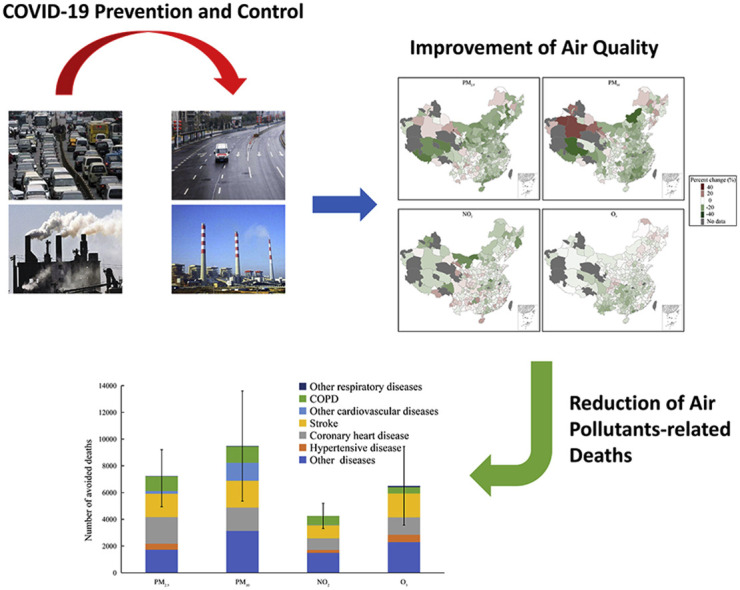- Record: found
- Abstract: found
- Article: not found
The air quality changes and related mortality benefits during the coronavirus disease 2019 pandemic in China: Results from a nationwide forecasting study

Read this article at
Abstract
Air quality changes during the coronavirus disease 2019 (COVID-19) pandemic in China has attracted increasing attention. However, more details in the changes, future air quality trends, and related death benefits on a national scale are still unclear. In this study, a total of 352 Chinese cities were included. We collected air pollutants (including fine particulate matter [PM 2.5], inhalable particulate matter [PM 10], nitrogen dioxide [NO 2], and ozone [O 3]) data for each city from January 2015 to July 2020. Convolutional neural network-quantile regression (CNN-QR) forecasting model was used to predict pollutants concentrations from February 2020 to January 2021 and the changes in air pollutants were compared. The relationships between the socioeconomic factors and the changes and the avoided mortality due to the changes were further estimated. We found sharp declines in all air pollutants from February 2020 to January 2021. Specifically, PM 2.5, PM 10, NO 2, and O 3 would drop by 3.86 μg/m 3 (10.81%), 4.84 μg/m 3 (7.65%), 0.55 μg/m 3 (2.18%), and 3.14 μg/m 3 (3.36%), respectively. The air quality changes were significantly related to many of the socioeconomic factors, including the size of built-up area, gross regional product, population density, gross regional product per capita, and secondary industry share. And the improved air quality would avoid a total of 7237 p.m. 2.5-related deaths (95% confidence intervals [CI]: 4935, 9209), 9484 p.m. 10-related deaths (95%CI: 5362, 13604), 4249 NO 2-related deaths (95%CI: 3305, 5193), and 6424 O 3-related deaths (95%CI: 3480, 9367), respectively. Our study shows that the interventions to control COVID-19 would improve air quality, which had significant relationships with some socioeconomic factors. Additionally, improved air quality would reduce the number of non-accidental deaths.
Graphical abstract
Related collections
Most cited references27
- Record: found
- Abstract: found
- Article: not found
A Novel Coronavirus from Patients with Pneumonia in China, 2019

- Record: found
- Abstract: found
- Article: found
A pneumonia outbreak associated with a new coronavirus of probable bat origin
- Record: found
- Abstract: found
- Article: found

